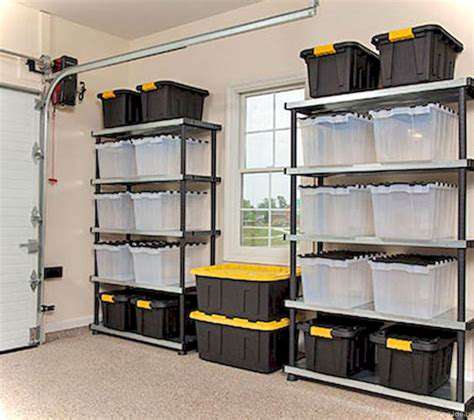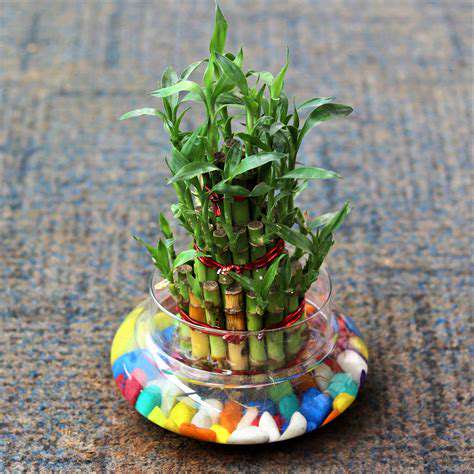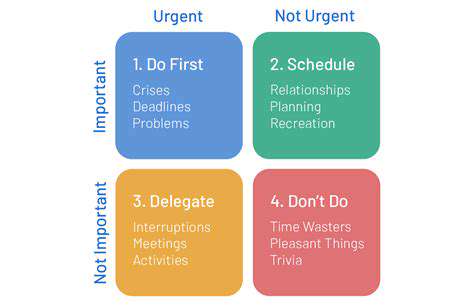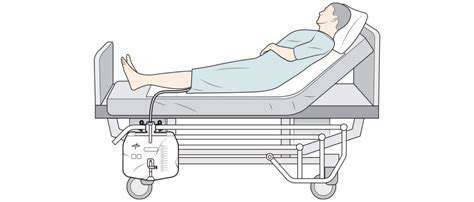How to create a clean and balanced garage
Start with the most visible areas first - the floor space and workbenches. These typically hold the biggest offenders. Old paint cans from that 2012 home project? Probably time to let them go. That exercise bike doubling as a coat rack? Be honest about its actual use. Pro tip: If you haven't used something in 18 months, it's likely not essential.
Prioritizing and Categorizing Items
Here's where the magic happens. Group items by their actual function, not where they ended up. All automotive supplies together. Gardening tools in one spot. Holiday decorations consolidated. This is when you'll discover you own three identical hammers and seven half-empty WD-40 cans.
For sentimental items, implement the photo rule. Take pictures of meaningful but space-hogging items before letting them go. The memory stays, the clutter goes. When dealing with tools, ask yourself: If I needed this tomorrow, would I buy it again? Your answer reveals its true value.
Identifying and Addressing Your Storage Needs
Now assess your storage gaps. Vertical space is chronically underutilized in garages. Pegboards transform walls into organized tool displays. Overhead racks create storage for seasonal items. A quality shelving system pays for itself in reclaimed square footage.
For small items, clear bins with labels beat cardboard boxes every time. Pro organizer trick: Use uniform containers for a clean look. The Container Store's modular systems work wonders, but even dollar store bins can revolutionize your space when used strategically.
Implementing Effective Decluttering Strategies
Adopt the one zone per weekend approach. Trying to overhaul the entire garage in one day leads to burnout. Instead, focus on:
- Week 1: Floor clearance
- Week 2: Workbench organization
- Week 3: Wall systems installation
Implement the 10-minute daily tidy - a quick sweep to return items to their designated spots. This habit prevents the creeping clutter that sabotages so many garage makeovers.
Maintaining a Clean and Organized Garage
Create an airlock system near the garage entrance - a designated holding area for items transitioning in or out. This buffer zone prevents random items from infiltrating your organized space. Every season, do a quick audit. Winter reveals which summer gear you actually used; summer shows which winter items collected dust.
Consider painting the floor with epoxy coating. It's not just about looks - the smooth surface makes sweeping effortless and psychologically reinforces the this space matters mentality. A clean floor becomes a clutter deterrent.
Implementing Storage Solutions for a Clean Garage

Choosing the Right Storage Type
Your storage system should match your usage patterns. Frequent-access items belong at eye level in open bins or pegboards. Seasonal items can go in labeled bins on high shelves. The 80/20 rule applies here - you regularly use about 20% of what's stored, so make that 20% supremely accessible.
For hazardous materials, invest in proper locked cabinets. Not just for safety - it forces you to consciously consider what chemicals you're storing. You'll likely discover expired pesticides or half-used paint cans that can be properly disposed of.
Data Security Measures
While we're focusing on physical storage, don't neglect documents. Shred old bills and statements immediately rather than letting them pile up. For important paperwork, use a fireproof safe or offsite storage. Digitize what you can - a scanner app on your phone can replace boxes of old records.
Storage Capacity Planning
Leave 25% of your storage space empty. This buffer accommodates new acquisitions without triggering reorganization. Like a highway, storage systems need capacity margins to handle peak loads smoothly. If you're consistently maxing out your space, it's time for another purge rather than more storage.
Scalability and Flexibility
Choose modular systems that can grow with your needs. Wire shelving can be reconfigured. Slatwall panels accept various hooks and baskets. The best garage systems evolve as your hobbies and priorities change. That kayak storage might become bike racks next year.
Cost Optimization Strategies
Before buying new storage solutions, try repurposing household items. Old kitchen cabinets make great garage storage. Bookshelves can hold bins. Get creative before opening your wallet. When purchasing, prioritize durability over price - cheap plastic shelves collapse under real garage use.
Smart lighting systems transform garages from caves into functional spaces. Motion-activated LEDs provide light exactly when and where needed. This isn't just convenient—it eliminates the I'll just leave the light on energy waste. Combine with smart outlets to control garage door openers and tools remotely.
Beyond the Basics: Enhancing Your Garage Experience

Creating a Multi-Functional Space
Today's garages often serve as workshops, gyms, and hobby centers. Define zones with rugs or floor tape. A simple workbench with proper lighting can spark creativity and productivity. For home gyms, rubber flooring tiles protect both equipment and floors.
Climate Control Considerations
Insulating garage doors makes the space usable year-round. Portable heaters or fans extend comfortable usage hours. Even simple solutions like thermal curtains on windows make a noticeable difference. For serious workshops, mini-split systems offer affordable temperature control.
Safety Enhancements
Install GFCI outlets near work areas. Keep fire extinguishers accessible. Proper lighting prevents accidents - consider adding task lighting above workbenches. Store hazardous materials properly and dispose of old flammables responsibly.
Personal Touches That Motivate
Add a Bluetooth speaker for music while working. Paint an accent wall in your favorite color. When the space feels intentional, you're more likely to maintain it. Even small decor items can transform a garage from storage to sanctuary.
The Maintenance Mindset
Schedule quarterly garage health checks. Wipe down shelves, check for pests, test safety equipment. Treat your garage like any other room in your home - worthy of regular care. This proactive approach prevents major reorganizations later.











